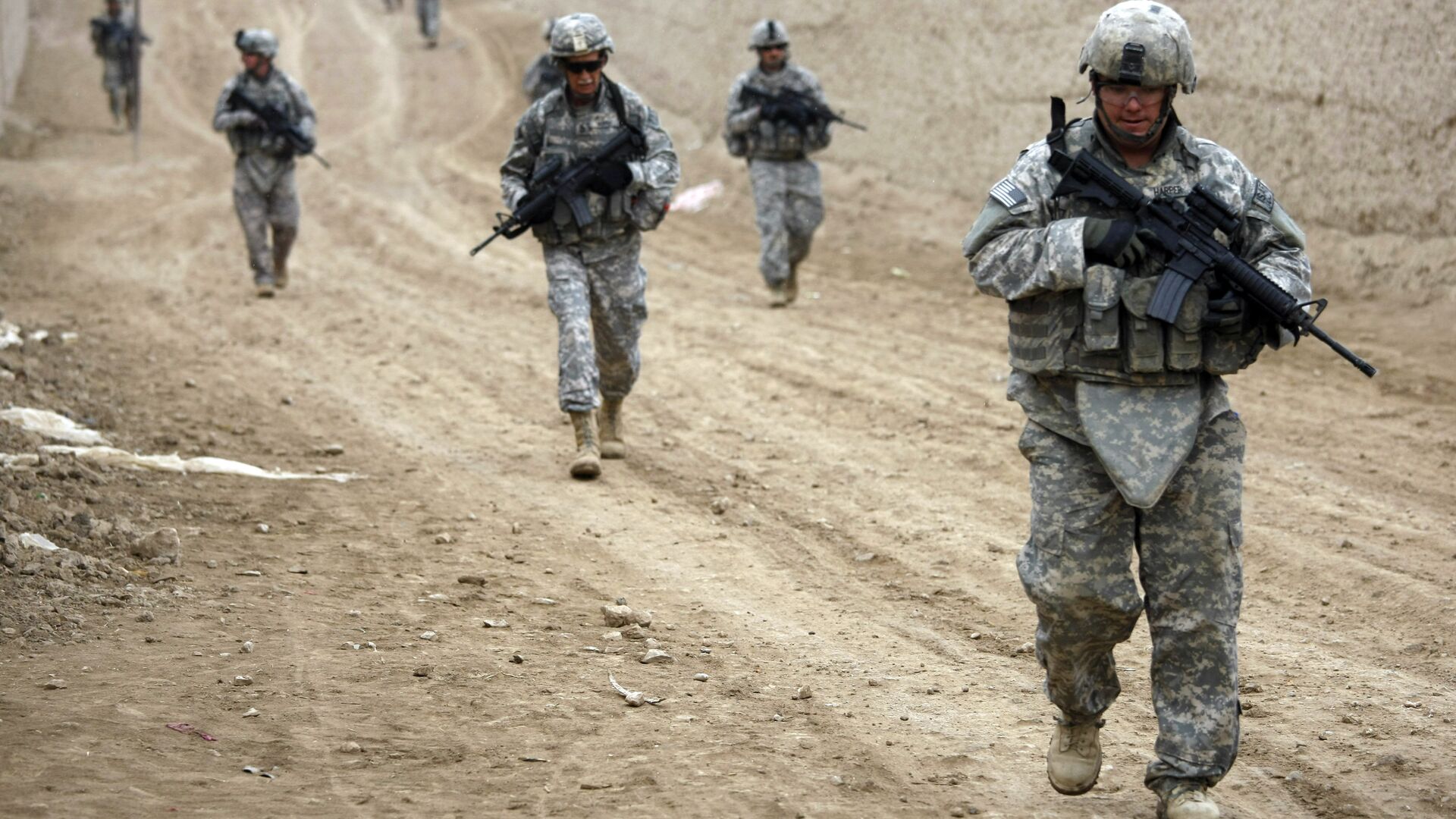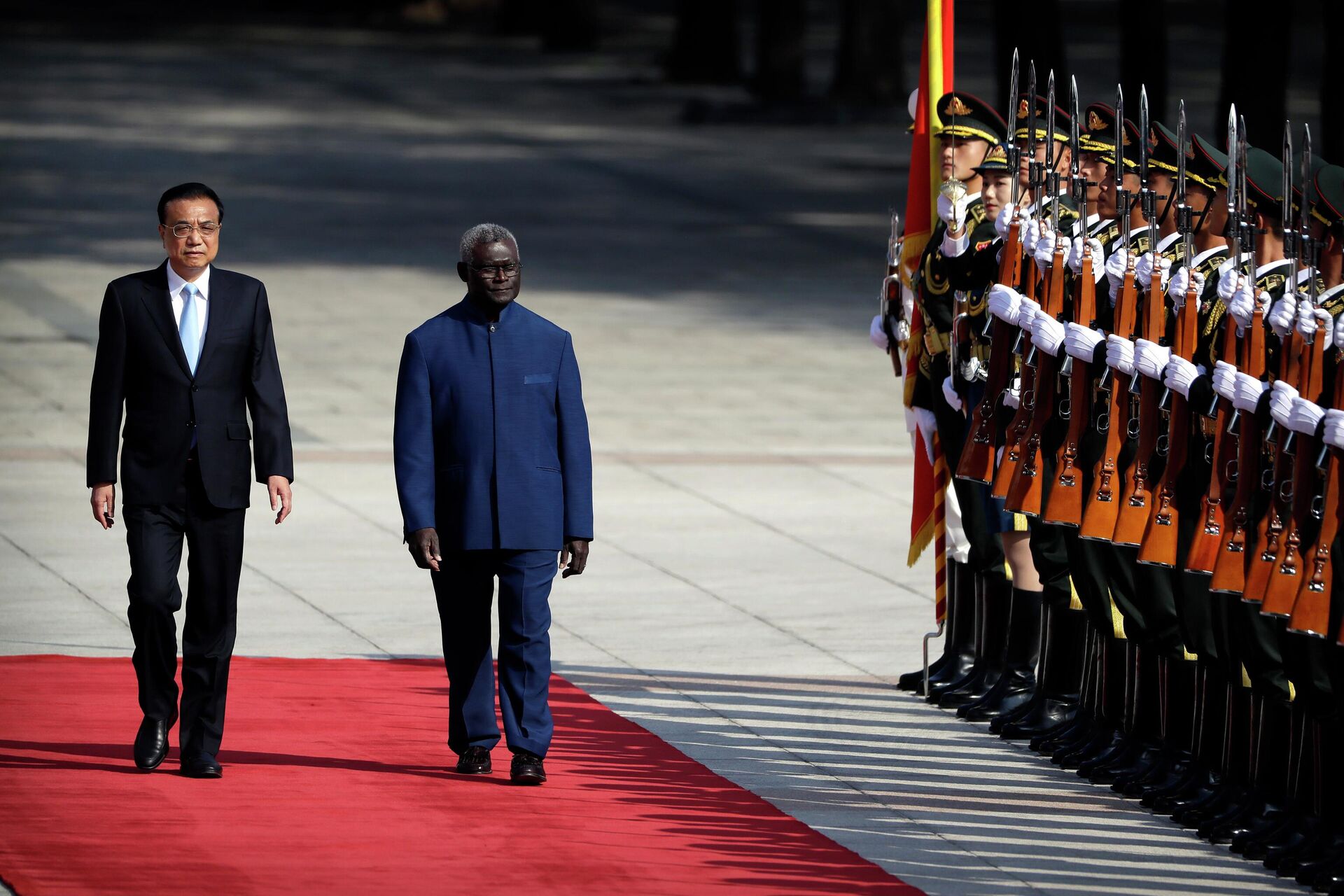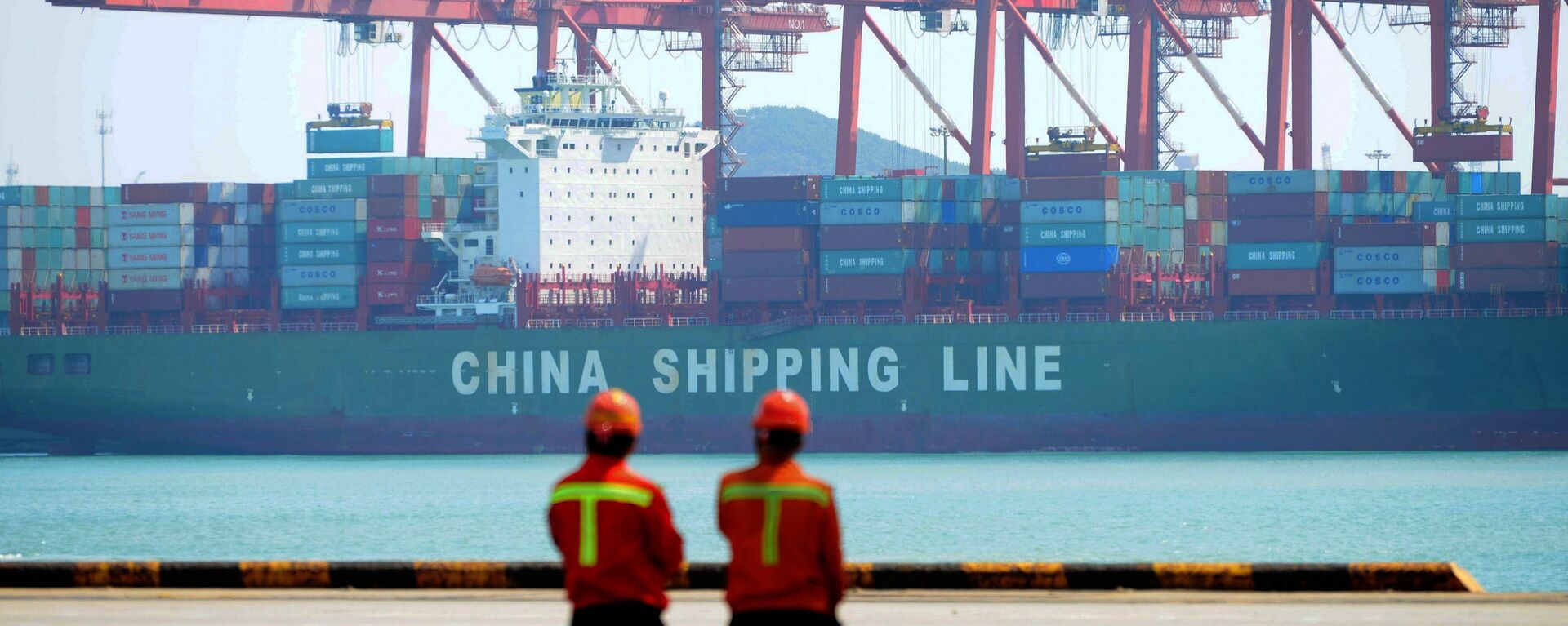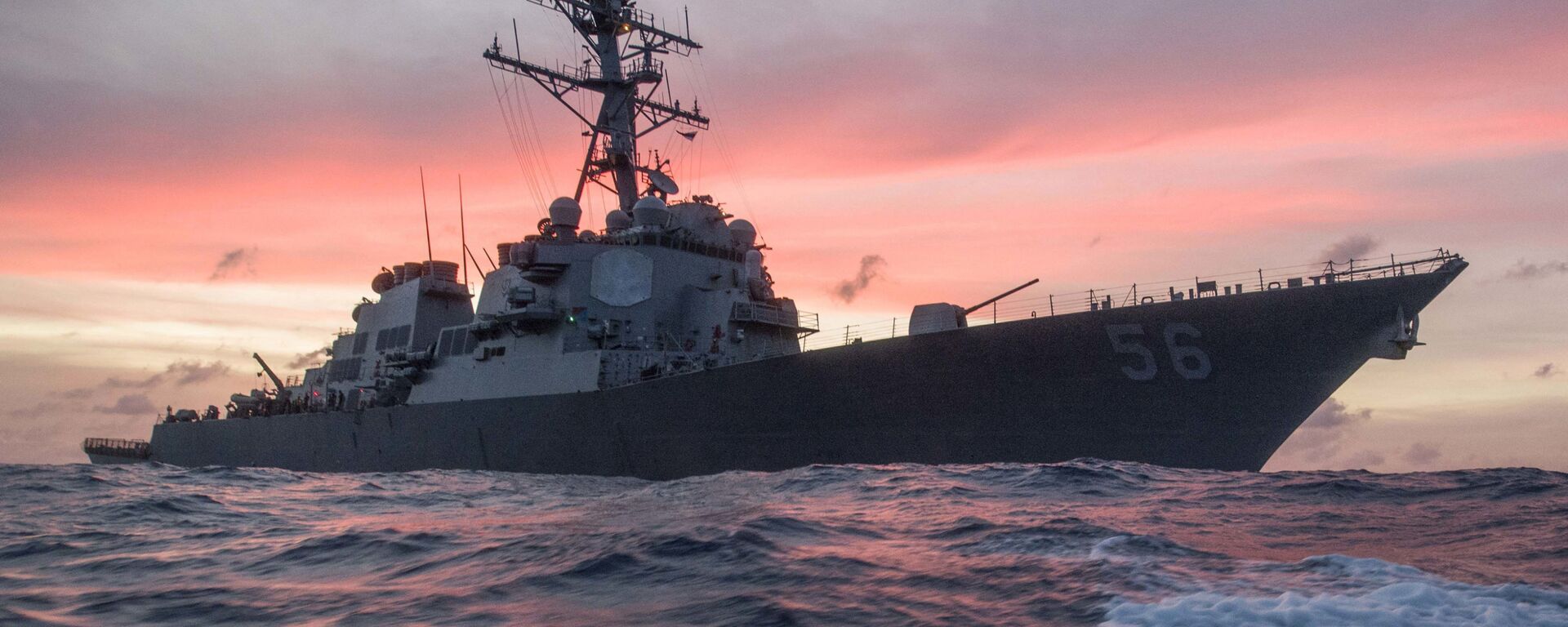US Military Expansion in Asia-Pacific is Part of Plan to Take on Russo-China Tandem, Scholar Says
16:15 GMT 28.07.2022 (Updated: 18:49 GMT 19.10.2022)

© AP Photo / Dario Lopez-Mills
Subscribe
The US National Guard is considering ramping up its training programs with Asia-Pacific nations to boost the American military presence there, as Gen. Daniel Robert Hokanson, a four-star general and the 29th chief of the National Guard, revealed to Defense One earlier this week.
"This is of immediate relevance to the United States' policy toward China, as it has recently become much harsher and more confrontational," says Dmitry Suslov, deputy director of the Center for Comprehensive European and International Studies at HSE University. "Since the escalation of the Ukrainian crisis the United States has significantly intensified its confrontational approach towards China, not weakened, but intensified. The US has made no secret of the fact that it considers China a strategic adversary, [as] the country that can undermine American global primacy, destroy the model of the international order that benefits the United States and has Americans at its center."
Speaking to Defense One on July 25, National Guard Bureau Army chief Gen. Dan Hokanson said that the military force is seeking to amplify its training presence in the Asia-Pacific region. Previously, United States Chairman of the Joint Chiefs of Staff Gen. Mark Milley elaborated during his trip to Indonesia that prioritizing the region has taken on a new significance given China’s increased "aggressiveness" over the past five years.
According to the Associated Press, US leaders have crisscrossed the Asia-Pacific in recent months, including high-profile visits by Defense Secretary Lloyd Austin and Secretary of State Antony Blinken. Moreover, defense chiefs from across the Asia-Pacific gathered this week for three days in Sydney, Australia to discuss “the whole situation with the rise of China, a free and open Pacific.”
"The United States believes that Russia’s special military operation in Ukraine could set a precedent for similar behavior on the part of China, and China, too, could resort to forceful solutions in addressing its national security problems, in particular, Taiwan," says Suslov. "And the Taiwan issue, the growing US-China tensions over Taiwan, are by far the most acute problem on the agenda between the US and China. But this is the consequence of the general American confrontational policy, as well as the problem in the South China Sea, where the United States continues and even intensifies demonstrative operations, the so-called activity to ensure freedom of navigation."
Washington is demonstratively provoking China and openly "consolidating, strengthening, and rallying the anti-China coalition in that region," the academic highlights. According to him, "the US National Guard's partnership programs with Asian countries are certainly anti-Chinese in nature" being part of "the general American policy of confrontation and containment of China."
US & China Compete for Influence Among Small Island Nations
The US National Guard training initiative was launched back in 2002. Since then, the guard has added 15 of the 36 Asia-Pacific nations to the program. Among them are Bangladesh, Cambodia, Fiji, Indonesia, Malaysia, Mongolia, Nepal, Papua New Guinea, the Philippines, Sri Lanka, the Maldives, Thailand, Timor-Leste, Tonga, and Vietnam. Defense One explains that the Guard tends to select partner nations "that have smaller militaries, so they can work directly with state guard units." According to Hokanson, US state guard units could support about 30 more partner nations in total.
Suslov does not consider the guard's program an emulation of a NATO-style alliance in the Asia-Pacific: "It's just the intensification of the US military relations with its Asian allies, while developing cooperation between the Asian allies of the United States with each other," he says.
"The Asian countries will not become formal members of NATO," Suslov continues. "But the intensity of cooperation will certainly increase. And, of course, the United States is strengthening military cooperation programs with Asian countries, increasing the ability to conduct joint military operations with Asian countries, thereby strengthening, of course, the containment of China. In other words, strengthening this particular bloc, strengthening the bloc's new approach against China."
While speaking to Defense One, Gen. Hokanson placed emphasis on the region's smaller island nations, viewing them as an important part of the US military's new approach to the Pacific. The general's remark came a few weeks after US Vice President Kamala Harris pledged to triple its aid to Pacific island nations to $60 million a year for a decade. The newly announced endeavor includes more funding for fisheries, extra aid, and offers of new US embassies in the Pacific. However, it seems that the US economic program is secondary to Washington's military interests in this part of the world, according to Suslov.
"I think militarily, military-political considerations come first here: small island states of the Pacific are ideal places for military bases," the academic emphasizes. "And here, of course, the United States would like to expand its own network of military presence and prevent a [possible] expansion of Chinese military presence. The recent agreement between China and the Solomon Islands has caused great concern in the United States and among its allies. Just a concrete example of an island state is the Micronesian Archipelago. And this agreement deals with security issues."
Commenting on the Sino-Solomon Islands pact, State Councilor and Foreign Minister Wang Yi underscored on June 3 that its purpose is "to assist the Solomon Islands in maintaining social order." He vehemently denied Western media speculation about China's apparent plans to beef up its military presence in the region.
China's efforts to establish close ties with island nations are quite understandable, according to Suslov. Currently, the People's Republic of China is “sandwiched”, having no access to the big, deep Pacific Ocean: "It is cut off by the territory of islands, starting with these islands and ending with Australia," he explains. China needs direct access to the Pacific Ocean and if it got control of Taiwan and accelerated rapprochement with Pacific island nations, this problem could be solved, according to the academic.

Chinese Premier Li Keqiang, left, and Solomon Islands Prime Minister Manasseh Sogavare review an honor guard during a welcome ceremony at the Great Hall of the People in Beijing, Wednesday, Oct. 9, 2019.
© AP Photo / Mark Schiefelbein
US Trying to Create Global Alliance Against Russia-China Tandem
While the US military is signaling willingness to expand their activity in the Asia-Pacific region, they are simultaneously continuing to provide assistance to Ukraine amid the Russian special operation to demilitarize and de-Nazify the country. One might wonder whether the US has the prowess and resources to take on China and Russia simultaneously.
"[T]he United States has become embroiled in confrontation with Russia and China at the same time," says Suslov. "But on the other hand, please note, the United States has lately consistently emphasized the Russia-China partnership as being one such common, global challenge. This is most clearly seen in NATO's new strategic concept, which was adopted very recently at the Madrid Summit. It says that not only Russia and China separately, but the Russia-China partnership is a global challenge to the American world order. And this is what helps the US, this is the thesis that helps the US consolidate its European and Asian allies into a coherent whole."
The academic explains that the US is now "trying to build this kind of global, truly consolidated, tightly integrated system of alliances, and not just vertically integrated."
"In other words, not just the UK-US, Japan-US alliances but an integrated system, including horizontal interconnection with the development of relations between the European and Asian allies of the United States," he elaborates. "This is the reason why Asian allies were invited to the NATO summit in Madrid. This is why NATO proclaimed that it now deals, among other things, with Asian affairs and must become a global alliance. This emphasis, the focus on the Russia-China partnership and the simultaneous confrontation with Russia and China allows the United States to create such a global, if you will, bloc, perhaps even surpassing the Cold War-era Western one."
Washington wants to consolidate part of Europe, part of Asia, and part of the Middle East around the idea of simultaneously confronting Russia and China, according to Suslov. Without creating this dual threat for its partners, Washington cannot glue the new alliance comprising nations from different parts of the world, the academic notes.
"China is not an existential threat to Europeans. And Russia is not a threat to Asian countries. But by emphasizing the tandem of Russia and China, the United States will theoretically be able to build this integrated global network of alliances," Suslov observes. "And this is the top priority for the US foreign policy, I think, for the next two or three decades."



